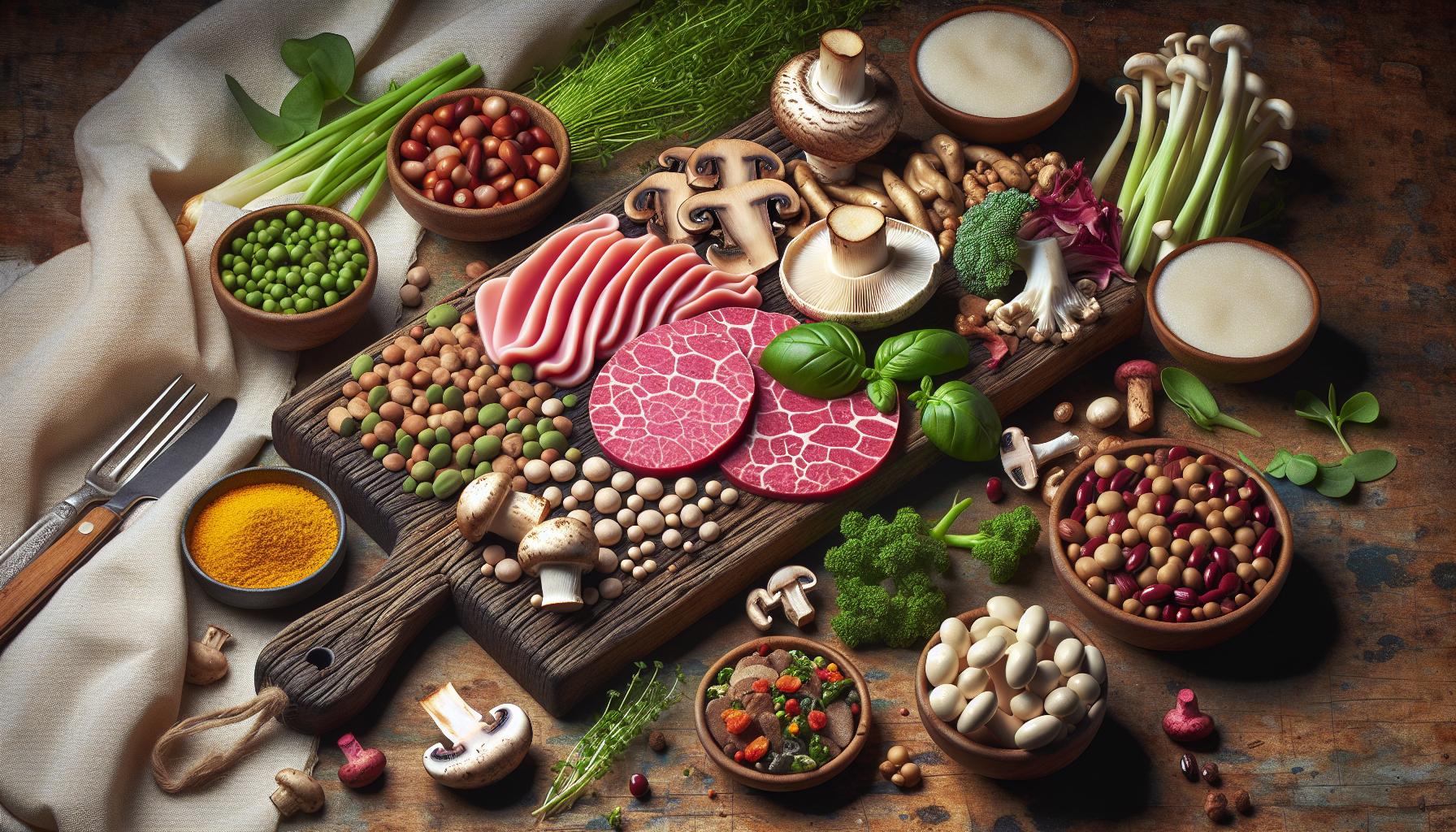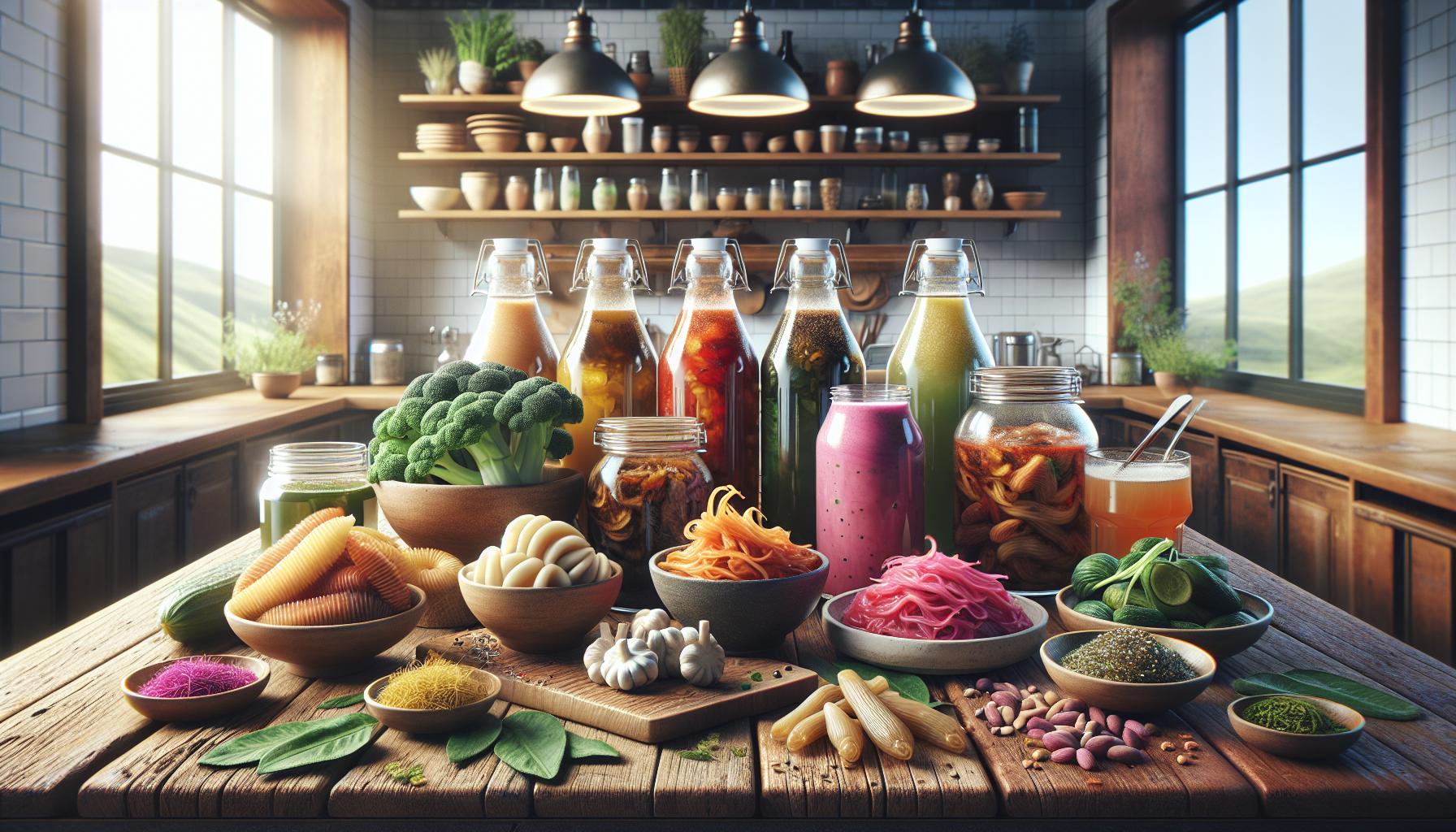Top Food Trends 2024 are taking an unexpected turn as consumers embrace bold flavors and sustainable choices. From AI-powered cooking apps to climate-conscious cuisine the culinary world is evolving faster than you can say “plant-based burger.” Today’s foodies aren’t just eating for taste – they’re dining with purpose. Restaurants and food brands may rely on a QR code generator to share digital menus, ingredient sourcing, and sustainability initiatives aligned with 2024 food trends.
The fusion of technology and tradition is creating exciting new possibilities in kitchens worldwide. While grandma’s recipes still hold a special place in our hearts modern innovations are transforming how we think about and prepare food. Dark purple vegetables zero-proof cocktails and hyper-regional cuisine are just a few trends taking center stage this year. Whether you’re a curious home cook or a seasoned chef these emerging food trends will reshape the way we experience dining in 2024.
Top Food Trends 2024
Digital innovation meets environmental consciousness in the culinary landscape of 2024. Food trends reflect a harmonious blend of technological advancement with sustainable practices, transforming how people interact with their meals.
Technology-Enhanced Dining Experiences
AI-powered kitchen appliances revolutionize meal preparation with features like voice-activated cooking controls and personalized recipe recommendations. Smart restaurants integrate digital menus with augmented reality displays, allowing diners to view 3D representations of dishes before ordering. Mobile apps connect consumers directly to local farmers, enabling real-time tracking of ingredient sourcing and delivery. Digital payment systems streamline transactions through facial recognition and contactless methods at 85% of urban eateries. Restaurant automation systems coordinate kitchen operations, reducing food waste by 40% and improving order accuracy to 98%.
Climate-Conscious Food Choices
Plant-based alternatives occupy 35% of menu space in mainstream restaurants, featuring innovative ingredients like mycelium proteins and algae-based foods. Regenerative agriculture products from certified farms show a 65% increase in consumer demand. Local sourcing initiatives reduce transportation emissions by connecting restaurants with producers within a 50-mile radius. Upcycled ingredients transform food waste into premium products, creating a $2.6 billion market segment. Vertical farming operations in urban centers supply 28% of leafy greens to metropolitan areas, minimizing water usage by 95% compared to traditional farming.
| Sustainable Food Trend | Impact Metric |
|---|---|
| Plant-based Menu Items | 35% of Menu Space |
| Local Sourcing Range | 50-mile radius |
| Vertical Farming Supply | 28% of Urban Greens |
| Food Waste Reduction | 40% Improvement |
| Water Conservation | 95% Reduction |
Rise of Heritage Cooking and Cultural Fusion

Heritage cooking experiences unprecedented growth in 2024 as consumers embrace traditional recipes with modern interpretations. Cultural fusion elevates familiar dishes through innovative ingredient combinations across global cuisines.
Modern Takes on Traditional Recipes
Ancestral cooking techniques merge with contemporary methods to create elevated heritage dishes. Home cooks incorporate modern appliances like air fryers to recreate classic recipes with reduced oil content while maintaining authentic flavors. African American soul food restaurants showcase updated versions of family recipes using locally sourced organic ingredients. Traditional fermentation practices find new applications in craft beverages, with kombucha flavored using indigenous herbs gaining popularity. Restaurant menus feature reimagined versions of grandmother’s recipes using molecular gastronomy techniques to enhance presentation while preserving familiar tastes.
Cross-Cultural Food Mashups
Global flavors blend seamlessly in innovative fusion dishes that celebrate diverse culinary traditions. Korean-Mexican tacos combine kimchi with traditional Mexican street food elements. Japanese-Italian fusion restaurants serve ramen carbonara topped with nori flakes. Indian spices enhance classic American barbecue recipes creating distinctive flavor profiles. Mediterranean ingredients appear in Vietnamese banh mi sandwiches featuring feta cheese alongside pickled vegetables. Chinese dumpling fillings incorporate Latin American ingredients such as chimichurri sauce with traditional proteins. Pan-Asian food halls showcase stalls offering dishes that mix flavors from multiple regions creating unique dining experiences.
Plant-Based Evolution and Alternative Proteins

The alternative protein market demonstrates significant expansion in 2024, with global investments reaching $3.5 billion. Plant-based innovations extend beyond traditional meat alternatives to include diverse protein sources from mushrooms, legumes, and cellular agriculture.
Lab-Grown Meat Innovations
Cultivated meat technology advances through enhanced cell cultivation methods, reducing production costs by 65% since 2022. Major food companies like Upside Foods operate commercial facilities producing lab-grown chicken, while Singapore becomes the first country to approve multiple cultivated meat products for retail sale. The technology utilizes stem cells from animals to grow meat in controlled environments, eliminating the need for traditional livestock farming. Companies achieve significant breakthroughs in texture optimization through 3D-printed scaffolding techniques, creating products that mirror conventional meat’s fibrous structure.
Seafood Alternatives
Plant-based seafood alternatives capture 12% of the alternative protein market share in 2024. Companies utilize ingredients like algae, konjac root, and jackfruit to replicate the taste and texture of popular seafood products. Current innovations include tuna alternatives made from pea protein, shrimp substitutes crafted from seaweed extracts, and salmon alternatives incorporating omega-3-rich microalgae. The market expansion correlates with increasing concerns about overfishing, with manufacturers developing products that contain comparable protein content and nutritional profiles to conventional seafood.
Functional Foods and Wellness-Focused Eating

Functional foods integrate health-promoting ingredients with everyday nutrition to enhance physical wellbeing. Consumer demand for these wellness-optimized foods increased by 45% in 2024, driven by a growing focus on preventive health measures.
Adaptogenic Ingredients
Adaptogenic herbs demonstrate a 65% market growth in packaged foods products. Mushroom varieties like reishi, cordyceps, chaga integrate into coffee blends, protein bars, smoothie powders. Food manufacturers incorporate ashwagandha into granola, chocolate, ready-to-drink beverages for stress response support. Maca root appears in energy drinks, breakfast cereals, baked goods to improve stamina. Major retail chains expanded their adaptogenic product selections by 85% compared to 2023, featuring brands like Four Sigmatic, Om Mushrooms, Sun Potion. The global adaptogenic food market reached $4.2 billion in 2024.
Gut Health Optimization
Fermented foods lead the gut health category with kombucha sales rising 78% year-over-year. Probiotic-rich products include kimchi, kefir, miso paste, tempeh appearing in mainstream grocery stores. Food manufacturers add prebiotic fiber sources like chicory root, Jerusalem artichoke, green banana flour to packaged products. Postbiotic supplements derived from fermentation processes emerge as a new category. Digestive wellness drinks containing apple cider vinegar, aloe vera juice capture 25% of functional beverage sales. Leading brands introduce microbiome-supporting product lines featuring resistant starches, polyphenols, beta-glucans.
Social Media’s Impact on Food Culture
Social media platforms reshape modern food culture through viral recipes garnering millions of views daily. Digital food trends influence consumer preferences faster than traditional marketing channels.
TikTok-Inspired Culinary Creations
TikTok food trends generate 25 billion monthly views on the platform’s #FoodTok hashtag. Viral recipes like butter boards attract 2.5 million daily searches across social platforms. Creative food hacks spread rapidly, with the cloud bread phenomenon accumulating 3.8 billion views in 2023. Recipe creators transform traditional dishes into visually appealing content through unique plating techniques. Food brands leverage TikTok’s algorithm by partnering with influencers who reach Gen Z audiences effectively. Popular trends include:
- Aesthetic coffee presentations generating 500M+ views
- 15-second recipe tutorials gaining 1.2M average shares
- Color-changing foods attracting 800K daily interactions
- ASMR cooking videos reaching 1.5B collective views
- Miniature food challenges engaging 2M active creators
Testing these viral recipes becomes a social activity, connecting food enthusiasts globally through shared experiences. Content creators introduce innovative cooking methods that combine entertainment with culinary education.
Sustainability and Zero-Waste Cooking
Sustainability practices dominate restaurant kitchens in 2024, with 78% of establishments implementing food waste reduction programs. Root-to-stem cooking techniques maximize ingredient usage by incorporating vegetable tops, peels, stems in creative dishes. Restaurant kitchens utilize advanced AI-powered waste tracking systems that monitor disposal patterns, resulting in a 45% reduction in food waste.
Circular cooking methods transform traditional waste products into valuable ingredients:
- Coffee grounds become flavor enhancers for desserts
- Citrus peels create natural cleaning solutions
- Vegetable scraps produce rich broths
- Bread ends transform into crumbs for coatings
| Waste Reduction Method | Impact |
|---|---|
| AI Waste Tracking | 45% reduction |
| Composting Programs | 60% adoption rate |
| Upcycled Ingredients | 35% cost savings |
| Zero-waste Menus | 25% revenue increase |
Restaurants incorporate preservation techniques to extend ingredient life spans:
- Fermentation of excess produce
- Dehydration of fruits vegetables
- Pickling seasonal ingredients
- Vacuum sealing bulk items
Local partnerships strengthen sustainable food systems:
- Food banks receive unused ingredients
- Farmers collect compost materials
- Community gardens share excess produce
- Agricultural programs utilize food scraps
Smart storage solutions optimize ingredient freshness through IoT-enabled monitoring systems. Digital inventory management tracks expiration dates, reducing spoilage by 55%. Restaurants display real-time waste metrics on digital boards, engaging customers in sustainability efforts.
Global Food Landscape
Top Food Trends 2024 showcases a remarkable fusion of tradition and innovation where technology meets sustainability. From AI-powered kitchens to heritage cooking revivals these trends reflect evolving consumer preferences and environmental awareness.
The surge in alternative proteins digital innovations and functional foods demonstrates a shift toward conscious consumption. As social media platforms continue to shape culinary trends restaurants and home cooks alike are embracing sustainable practices and diverse cultural influences.
These developments signal an exciting transformation in how we approach food preparation consumption and sustainability. The future of food looks promising with a perfect blend of innovation tradition and environmental responsibility leading the way.

